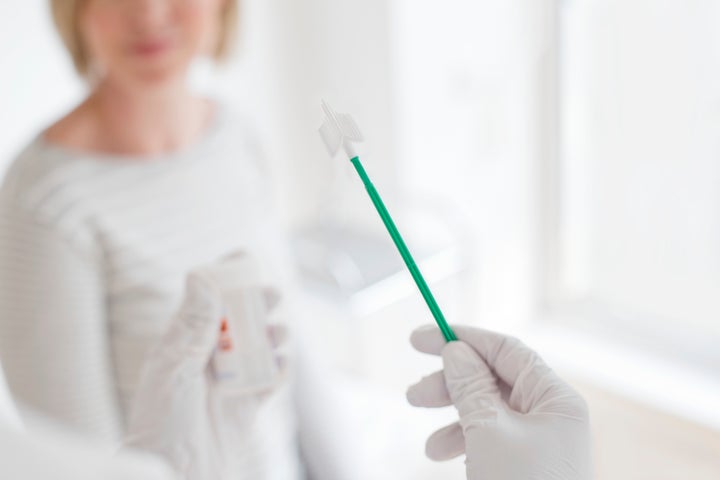
Cervical screening, put simply, saves lives. It stops 75% of cervical cancers from ever developing and is a free health test for every woman. So, why is attendance at an all-time low?
We know that no one really looks forward to their test. It’s something to tick off the to-do list and can give us the feeling of doing some really great adulting when we book it, but it’s not exactly enjoyable. For most people though, while it can be uncomfortable and a bit embarrassing, it’s actually over really quickly and not as bad as we thought.
For some people though, it’s much more difficult. Some women are afraid of the test, others have had a previous bad experience at a test and for others a physical disability, mental health problems or experience of sexual violence can make it extremely hard to attend.
Much more needs to be done to ensure every single woman and person with a cervix has the information and opportunities they need to access cervical screening.
The cervical screening programme itself is constantly evolving and improving. Just this year, we have seen the more effective HPV testing being rolled out to women in Wales, with the screening programme in England switching during 2019 and Scotland and Northern Ireland following. HPV testing is a far more accurate way of identifying those more at risk of developing cervical cancer and will save lives, so this is a hugely exciting change.
This week, research on an even newer way of testing has been released. Further research is needed to understand the potential, however, by looking at epigenetic changes (which can control how DNA is read and how cells behave) it may be possible to pick up even more abnormal cells before they develop into cervical cancer. It’s an exciting prospect but it’s very early days.
While improving the test is essential, it only benefits the women who book and attend. Right now, that number is falling. We are facing an all-time low in attendance and this must be addressed.
Getting an appointment at a GP can be challenging for many and the number of sexual health clinics offering cervical screening has also been declining, in part due to public health funding cuts which many local authorities are struggling with.
We can’t sit back and let attendance continue to slip or we will see diagnoses of an often-preventable cancer increase and more lives lost.
One advance that would make a huge difference is self-sampling. Offering women the option to self-sample in their own home or at their GP would make screening a much more accessible test. In addition to those who struggle to get appointments or travel to their clinic, it would make it easier for lots of women who find it a difficult and invasive test. Our research found that 80% of women would actually prefer to self-sample, rising to 88% of women who have delayed attending. The sooner we get self-sampling offered as part of the cervical screening programme, the sooner we start to bring more women back into this life-saving programme.
Acknowledging the barriers and factors impacting women’s ability to take up their invitation is essential. This means sharing tips and support for women. Many people don’t know you can ask for a smaller speculum, to lie in a different position or that you can ask for a different nurse.
We are running our #SmearForSmear campaign during Cervical Cancer Prevention Week (21-27 January 2019) to make sure that we share this knowledge as widely as possible. We are asking as many people as possible to share smeared lipstick selfies along with tips and words of support. Grab a lipstick and put the date in your diary. Your post might just be the reminder or encouragement someone needs to book their test. It could literally save a life.